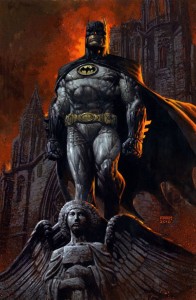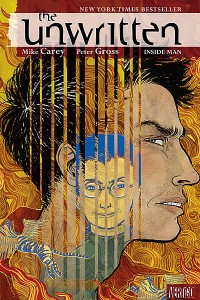
“Supple is the word. It’s really weird. Batman can take anything. You can do comedy Batman, you can do gay Batman … it all works. It something [sic] intrinsic to the character. It’s so strange and amazing. […] Nothing I’ve done with Batman is so shocking that it hasn’t been seen before. […] Don’t worry about the aspects of this stuff, we’re re-drawing aspects of Batman’s history all the time. […] I tell people not to worry. Batman can take it. He’d done it before.”
Take that, Frank Miller.
Interviewed by Kiel Phegley at Comic Book Resources, Marvel editor Tom Brevoort talks about the point where marketing and storytelling intersect:
“[T]he goal here is to reach the widest audience possible. We absolutely keep our marketing hats on at the same time as our storytelling hats, and there is a balance to strike. If we’re doing something just for marketing, but it doesn’t make character or story sense, then it’s not worth doing. But there is a middle ground where marketing and story can meet to get the biggest bang for the effort put in.”
What Brevoort is looking for may be what’s called “appeal”; something—whatever it may be—that is of enough value to human beings so that exposing themselves to a given story that promises to have it might seem to them like a worthwhile thing to do. If there’s no such appeal, there’s no real story to be told. If there’s no such appeal, marketing efforts have nothing to latch on to.
Finding a compromise or middle ground between “story” and “marketing” has nothing to do with it, though; it’s the same thing. Only the storyteller’s job is to find and bring out the appeal, and the marketer’s job is to find the best way to pitch it to people.
At Techland, Douglas Wolk looks at Matt Fraction and Salvador Larroca’s Invincible Iron Man and Gilbert Hernandez’s The Troublemakers to discuss the use of horizontal, “widescreen” panels and their advantages and disadvantages:
“About the only way the widescreen layout can make a scene look more exciting is if there’s some kind of movement going on within the panels–and then it usually has to be moving consistently from left to right, at least in Western comics. But there’s not much motion in this issue, and Larroca tends to keep the focal point of each panel somewhere around the middle. That means that almost every page feels like there’s a line going right down the center, with a lot of dead space around it.”
I like how, in a matter of months, Wolk has managed to establish a reliable outlet for close critical readings and storytelling analysis of comics at a mainstream pop-culture site like Techland that aren’t just insightful in their observations, but also well-written and accessible in the way they approach their subjects.
You’d think this was the sort of thing that sites which are focused on comics should want to be doing best, not just because it’s their turf, but also because that’s where you’d expect the target audience for this type of article to be.
All the more reason to appreciate Wolk’s work.

One of the most critically acclaimed Vertigo titles of late, The Unwritten stars Tom Taylor, whose father created a hugely popular series of books with more than a passing resemblance to Harry Potter. Their protagonist, called Tommy Taylor, is said to be based on the real Tom Taylor—until Tom’s identity is called into question, that is.
The Unwritten seems like a carefully and smartly constructed inversion of Pinocchio, basically, with a protagonist finding himself in a situation requiring him to prove he’s the real deal, and not much of a clue about how he’s supposed to do it. It’s very much a story about the nature of fiction itself, as it relates to reality and identity. And it’s one whose creators don’t forget to root the intriguing intellectual approach in engaging character work. Or that’s my take on the first issue, anyway; here’s the Techland critics’ discussion of Inside Man.
Marc-Oliver Frisch writes about comics at his weblog and at Comicgate. You can also follow him on Twitter.




The Unwritten is the series I most often introduce readers to that garners a “That blew my mind!” response.
I have yet to have a subscriber drop it.
Comments are closed.